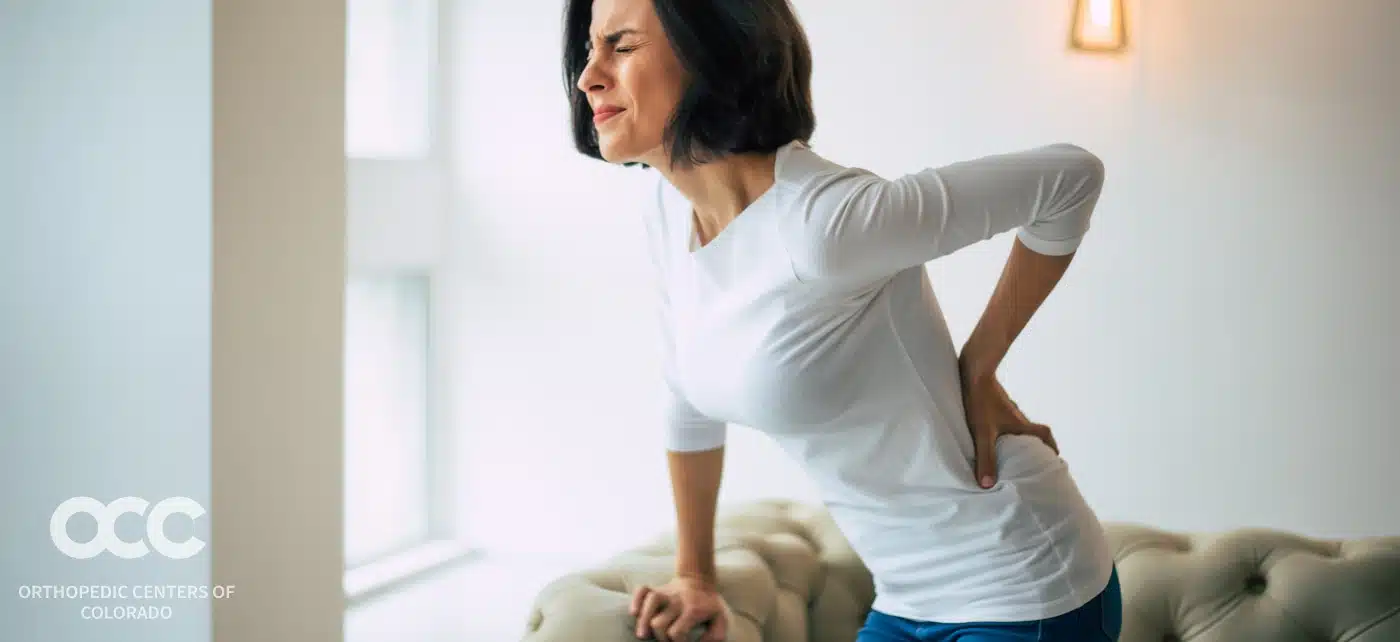Can you sense the next approaching storm even before the local meteorologist does? If you do, you might have noticed that your arthritis pain often acts as a reliable indicator of changing weather. This phenomenon is primarily due to barometric pressure fluctuations, which tend to intensify joint pain in people with arthritis as weather patterns shift.
And while it might be a cool party trick to accurately forecast a storm, the cold weather impacts of arthritis are never fun. Read on to learn what arthritis treatments are available and how they could work for you.
What is arthritis?
Arthritis is a condition characterized by joint inflammation, leading to pain, swelling, and stiffness. Among the different types of arthritis, osteoarthritis stands out as the most frequent form. This condition leads to the gradual deterioration of cartilage. As the cartilage wears down, it becomes rough and damaged. Osteoarthritis is classified as a degenerative disorder because it involves the progressive breakdown of cartilage, leading to its eventual depletion.
In the advanced stages of osteoarthritis, the protective cushioning between the bones is lost, resulting in bone-on-bone contact. This friction can cause considerable pain and may lead to the development of bone spurs.
What causes arthritis?
Osteoarthritis usually arises from the natural wear and tear of the body. Factors like overuse or injury can worsen this condition, and it’s frequently observed in individuals with rheumatoid arthritis as well. It becomes more common with age, particularly after 40, and is seen more often in women, especially those over 50.
When osteoarthritis develops as a result of an injury, it is known as posttraumatic arthritis. An injury can lead to decreased joint stability, which in turn causes further deterioration. Over time, this increased wear and tear can evolve into arthritis.
Is there a cure for arthritis?
There is no cure for arthritis, so beware of ‘miracle cures’ that claim otherwise.
Even without a cure, it’s still imperative to get treatment. There are many treatment options that can reduce pain so that you can be active, as well as minimize or slow the long-term cartilage and bone damage.
Numerous non-surgical options exist for treating arthritis, and your orthopedic specialist will typically start with the least invasive methods. These may involve taking periods of rest, steering clear of strenuous or weight-bearing activities, and using anti-inflammatory medications.
Occupational or physiotherapy may also be advised, encompassing specific exercises and heat treatments. In more severe cases of arthritis, your doctor might suggest injecting cortisone directly into the joint, which can significantly alleviate pain and facilitate other treatments like physical therapy and exercise.
Exercise also plays a crucial role in managing arthritis. It enhances joint lubrication and strengthens the muscles around the joints, thereby easing joint stress. Activities in a heated pool, for instance, can greatly reduce pain and improve flexibility. Research consistently shows that exercise benefits arthritis patients by reducing pain and stiffness, and by enhancing flexibility and muscle strength.
Remember, the primary goals in treating osteoarthritis are to lessen pain and enhance joint function. This may include:
- Heat or cold therapy for temporary relief from pain.
- Maintaining a healthy weight to reduce stress on weight-bearing joints.
- Exercises to maintain joint flexibility and build muscle strength.
- A variety of medications to manage pain, including corticosteroids and NSAIDs. In cases where joints are inflamed and unresponsive to NSAIDs, glucocorticoids may be injected.
- Acetaminophen may be used for mild pain without inflammation.
- Joint protection techniques to avoid overstraining painful joints.
- Surgery in some instances, especially when there’s chronic pain in damaged joints.
When all conservative treatments have been tried without success, and if your arthritis becomes debilitating, surgery might be the next step.
Surgery is usually considered the last resort but may become necessary for symptom relief. The type of surgery recommended will depend on factors like age and the severity of the condition. Arthroscopy involves small incisions through which damaged portions of the joint are removed. Osteotomy, which reshapes the bones of the joint, is conducted only if the damage is confined to one side of the joint. Arthroplasty, or joint replacement surgery, involves replacing the affected joint with an artificial one. For older adults with severe arthritis, joint replacement surgery can yield positive outcomes.Read more information on arthritis treatment. Our orthopedic and sports medicine specialists can diagnose your joint pain to determine if it’s arthritis and help to put you on a path to pain relieve and mobility.







